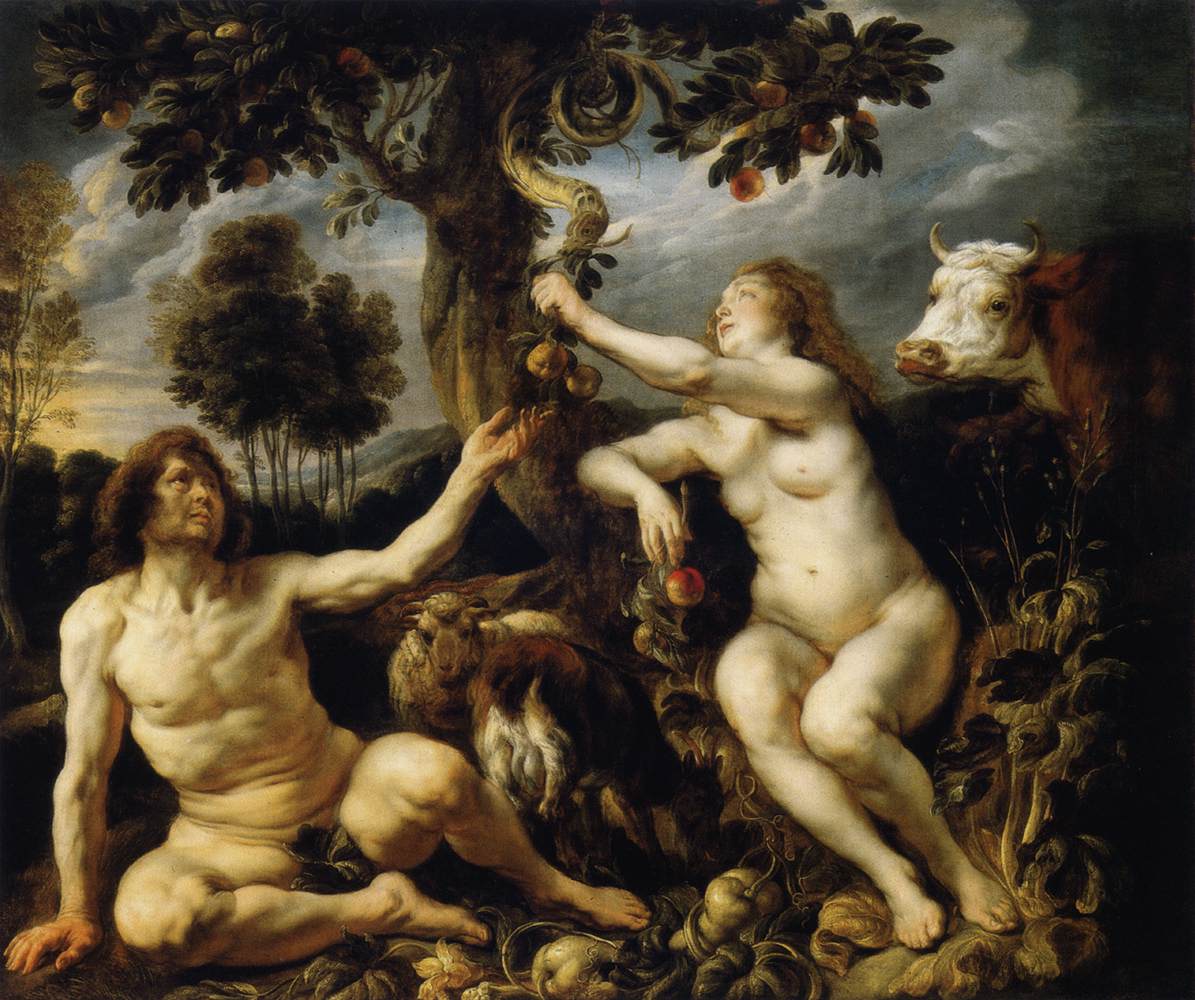Description
The painting "The Fall of Man" by Flemish artist Jacob Jordeens is a 17th-century masterpiece that captivates viewers with its dramatic depiction of original sin. The work, which measures 185 x 221 cm, shows Adam and Eve in the Garden of Eden, surrounded by animals and fruits. The serpent, symbolizing temptation, slithers down the tree of the knowledge of good and evil, while God, represented by a bright light in the sky, watches the scene from above.
Jordeens' artistic style is characterized by detailed realism and a rich color palette. In "The Fall of Man", he uses warm, earthy tones to create a cozy and natural atmosphere in the Garden of Eden. The details of the leaves, branches and fruits are impressive, giving the work an almost photographic look.
The composition of the painting is impressive. The figure of Adam and Eve is in the center of the work, surrounded by animals and plants. The snake, which slides down the tree, creates a diagonal that divides the work into two parts. Divine light illuminating the scene from above creates a focal point in the sky.
The story behind the painting is interesting. It was commissioned by St Paul's Church in Antwerp in 1620 and became one of Jordeens' most famous works. The painting was stolen by French troops during the French Revolution and was eventually returned to Antwerp in 1815.
One of the lesser known aspects of the work is its symbolism. The serpent, representing temptation, slides down the tree of knowledge of good and evil, while Adam and Eve are naked, symbolizing their innocence and vulnerability. The divine light in the sky represents the presence of God and his judgment on sin.
In short, "The Fall of Man" is a masterpiece of Flemish art that captivates viewers with its detailed realism, rich color palette, and impressive composition. The story behind the painting and its symbolism add an additional layer of interest to this timeless work.

